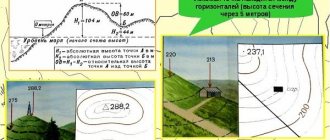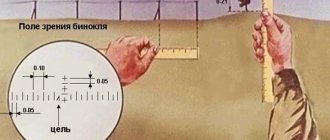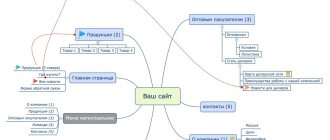Directional angle (DA) should be understood as a value consisting of any value from 0 to 360 degrees . To determine this, a vertical coordinate grid and the movement of the clock hands are taken. The countdown is in the northern direction, where the axial meridian is shown in the six-degree zone.
Directional angle accuracy from 1 to 60 seconds is achieved using the method:
- Geodetic.
- Astronomical.
- Gyroscopic.
- Space.
The peculiarity of the forms, the internal structure, and the movement of the earth's ellipsoid are endowed with geographic, magnetic poles that do not coincide. The axis runs along the North and South geographic poles, where our planet rotates. If we consider a giant magnet in the form of the Earth, then its landmarks gradually change; there is no constancy in these coordinates. The readings of the needle on the compass are taken as magnetic, and not true, they cannot have coincidences.
Therefore, surveyors came up with the concept of true and magnetic meridians ; directions to objects are measured from them. For remote control you will need the distance between the selected and northern directions on the topographic map. A protractor is used as a tool for measurements or constructions. If you need to construct such an angle on a map, select a point and draw a straight line through it, parallel to the vertical rays shown by the kilometer grid in the northern direction. Once this feature is determined, constructing the angle will not be difficult. Such actions are needed to navigate maps.
The concept of azimuth and its types
In general, azimuth is the angle between the north-south direction and a straight line drawn through the standing point and a reference object (on the ground or on the map).
From Arabic, this term literally translates as “direction.” Azimuth is measured in the range from 0 to 360°, the count is taken clockwise.
There are magnetic, true (geographical), geodetic, gyroscopic, and astronomical azimuths.
Magnetic azimuth is the horizontal angle between the magnetic field lines connecting the Earth's north and south magnetic poles and the direction towards an object. The compass needle is always oriented along the lines of the planet's magnetic field and points one end to the north and the other to the south. The northern end is aligned with zero degree on the compass scale.
Geographic azimuth is the horizontal angle between the geographic meridian at the standing point and the direction to the landmark. It differs from the magnetic one in the magnitude of the magnetic declination, caused by the mismatch of the true and magnetic poles.
Geographic meridians and parallels do not coincide with the lines of the coordinate grid by several degrees, therefore, when making accurate measurements, a correction is made for the convergence of the meridians. Magnetic declination and convergence of meridians are indicated at the bottom of the topobase, outside the sheet.
Gyroscopic azimuth is the angle between a conventional line running from south to north through the gyrocompass and a given direction. There are small discrepancies between gyroscopic and geographic and magnetic azimuths, since the gyroscope takes into account the correction for the rotation of the Earth (gyrocompass delta).
Astronomical azimuth
Astronomical azimuth is a 2-sided angle between the plane of the astronomical meridian and the vertical plane of a given direction. The countdown is taken from the north (clockwise).
Geodetic azimuth is a 2-sided angle between the geodetic meridian plane and the tangent plane that passes through the standing point and the observation point.
In geodesy, it is taken into account that the Earth is not a perfect sphere; the planet is “flattened” at the poles and is an ellipsoid of rotation. Therefore, the standing point-observation point plane contains the normal to the ellipsoid.
In geology, the azimuths of dip and strike of rock layers and fractures are measured. Measurements are taken to construct geological maps of mineral deposits on the surface and in volume.
To navigate the terrain, it is enough to understand the difference between magnetic and geographic azimuths. In addition, it is important to know the magnetic declination in a particular area.
The Earth's magnetic poles are gradually moving. The further north (or south) the area, the greater the magnetic declination. In the southern hemisphere, the magnetic pole is located in the ocean, near the coast of Antarctica. In the north - on the territory of the archipelago belonging to Canada.
General indicators
DU, azimuth are just geometric quantities, they are measured in the same units, ranging from 0 to 360 degrees. These mechanisms are closely related to determine orientation from topographic maps. When preparing routes using azimuth, interrelated actions are carried out on the map:
- Mark the landmark of the turning point.
- Calculate the remote control and the length of straight sections.
- The remote control is converted to magnetic azimuth; specialists use a special formula for this. Where the declination is subtracted from the remote control value and the indicator for the convergence of the meridians is added, which in turn is calculated by the angle between the true meridian and the vertical coordinate line.
- The distance is converted into a convenient unit of measurement and transferred to the map.
The directional angle, together with magnetic, true azimuths are in a single connection to calculate the correct direction in further orientation. For an accurate determination, a conversion from one value to another is performed.
How to find azimuth - 3 ways
There are different ways to find azimuth. It can be determined using a protractor, topographic map and compass.
1️⃣ Using a protractor
To determine azimuth from a map you need to have









